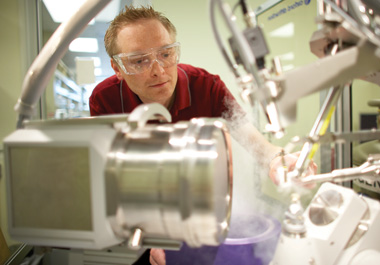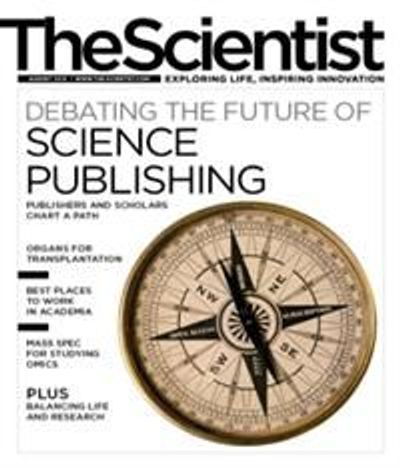Research has always been a challenging and creative venture—requiring some luck and a lot of hard work. But in recent years, as the National Institutes of Health budget has failed to keep up with inflation, even established researchers with successful labs are having a hard time securing funding for their work. To add to these pressures, the past decade has seen institutions, especially in the university setting, burdening researchers with larger administrative staffs, which see research as a means to an end—money from the commercialization of products—rather than the pursuit of knowledge.
 For the past 10 years, The Scientist’s Best Places to Work in Academia surveys have followed changing trends as reported by academic researchers, asking them to highlight the aspects of work they value the most—such as support, access to great research, and collaborations—as well as areas they wish their institutions would improve, such as appropriate family-care...
For the past 10 years, The Scientist’s Best Places to Work in Academia surveys have followed changing trends as reported by academic researchers, asking them to highlight the aspects of work they value the most—such as support, access to great research, and collaborations—as well as areas they wish their institutions would improve, such as appropriate family-care...
Despite the challenges and financial restrictions, new institutions are springing up to address unmet needs within the research community. One example of an innovative not-for-profit company is this year’s #2 institution, Sage Bionetworks. The medical research organization opened its doors just 3 years ago thanks to scientific luminaries Stephen Friend, formerly a senior vice president at Merck, and Eric Schadt, who helped Pacific Bioscience develop its SMRT single molecule DNA sequencer and remains its chief scientific officer while heading up the Institute for Genomics and Multiscale Biology at Mount Sinai School of Medicine in New York. (Read about Schadt’s research in our July 2008 issue.) Sage Bionetworks aims to spur collaborations among computational biologists and academic and clinical researchers to make sense of the data deluge coming from some of the most advanced sequencing and proteomic analyses in order to develop disease models for rational drug development.
Another example is this year’s #4 institution, the Research Center for Molecular Medicine (CeMM), in Vienna, Austria, whose new, year-old facility gives it an edge in translational research. “We have the second-largest hospital in the world right next to us,” helping to reinforce the ties between researchers and clinicians, says Andreas Bergthaler, a viral immunologist at CeMM.
Read more about this year’s top-ranking institutions and find out why their scientists think they are great places to work.
—Edyta Zielinska
[table id=10 /]
Open Doors at Sage Bionetworks
 Founded only 3 years ago, Sage Bionetworks has already attracted top-notch researchers to create up-to-date disease models and software for optimizing collaborative research in developing effective drug treatments for human diseases. The core mission of this year’s #2-ranked institution is to provide a framework for biomedical researchers to analyze the constant torrent of new molecular and genetic information and develop software for sharing data.
Founded only 3 years ago, Sage Bionetworks has already attracted top-notch researchers to create up-to-date disease models and software for optimizing collaborative research in developing effective drug treatments for human diseases. The core mission of this year’s #2-ranked institution is to provide a framework for biomedical researchers to analyze the constant torrent of new molecular and genetic information and develop software for sharing data.

Sage has already produced promising results in studies that would not have been possible 3 years ago. For example, one compound originally developed for asthma was run against one of Sage’s comprehensive disease models, which correctly predicted that it would also alter insulin and glucose levels—suggesting diabetes as a potential new indication for the drug.
With fewer than 30 researchers, each with a different specialty, Sage Bionetworks is an “incubator for innovation,” says senior scientist Brian Bot, who feels that weekly interactions with software engineers as well as oncologists with direct patient contact help him put “a different spin on things.”
Located on the campus of the Fred Hutchinson Cancer Research Center in Seattle, Washington, Sage Bionetworks also benefits from all that the larger institution has to offer, plus perks like a rooftop patio overlooking Lake Union, where you can “gaze at the Space Needle while seaplanes coast overhead to land on the lake,” says senior software engineer Bruce Hoff.
Last year, the institution received $6 million in federal and private funding. “Because we are well funded, we can do our job right,” Hoff says. “We have the breathing room to design and implement software using industry’s best practices.”
Sage works firmly in the open-science paradigm. The entire organization of 34 scientists and staff members meets every 2 weeks, encouraging researchers to become invested in the institution as a whole, says principal scientist Lara Mangravite. “We all get to have feedback into where the organization itself is going,” she says. The reward for meeting this year’s goals is an entire week off in the month of July. Next year, the Sage Bionetworks team is aiming for 2 weeks.
—Hayley Dunning
CeMM: A View from the Top
 Working at the Research Center for Molecular Medicine (CeMM) of the Austrian Academy of Sciences isn’t all about soaking up the astounding views of Vienna’s skyline from the facility’s rooftop terrace. But that feature of the relatively young facility is emblematic of the collaborative and fun atmosphere that makes the center a great place to work, its researchers say. “They definitely know how to party,” says epigenomicist Christoph Bock of the CeMM staff, which adjourns to the terrace every month after joint lab meetings with the medical university next door.
Working at the Research Center for Molecular Medicine (CeMM) of the Austrian Academy of Sciences isn’t all about soaking up the astounding views of Vienna’s skyline from the facility’s rooftop terrace. But that feature of the relatively young facility is emblematic of the collaborative and fun atmosphere that makes the center a great place to work, its researchers say. “They definitely know how to party,” says epigenomicist Christoph Bock of the CeMM staff, which adjourns to the terrace every month after joint lab meetings with the medical university next door.

But researchers at the #4-ranked institution also know how to work. Last year, for example, a team led by CeMM Scientific Director Giulio Superti-Furga reported the discovery of a novel regulatory mechanism that may become a therapeutic target for chronic myelogenous leukemia.
The 140 staff members at CeMM collaborate across disciplines in three key areas of research: cancer, inflammation, and immunity. And the camaraderie that researchers and students share certainly helps foster this collaboration. “We really know each other very well,” says Anannya Bhattacharya, a first-year PhD student in the lab of viral immunobiologist Andreas Bergthaler. “You’re not bound by your own lab bench; you always interact with other lab groups.”
The collaboration even extends beyond the walls of CeMM to clinicians and repositories at the Vienna General Hospital, which is literally right across the street, adds Bergthaler, whose lab studies mouse models of oxidative stress in viral hepatitis. The hospital houses tissue banks, reference libraries, and patient samples that CeMM researchers can access, Bergthaler says. “This is one of the advantages of being embedded in a medical campus but at the same time having a basic science focus as well.”
Bock, who has a joint appointment with CeMM and the hospital, says that the center’s first-rate technological facilities, plus the ability to see the clinical relevance of his work in the epigenetic aspects of cancer, really makes a difference. “My work is a combination of work driven by the medical need of the neighboring hospital and [research] enabled by next-generation sequencing technology,” he says. “It gives you direction in how you approach a problem.” Of course, the view from the roof doesn’t hurt either.
—Bob Grant
Administrative Overload
In the 10 years during which The Scientist has been surveying researchers in academia, funding has remained essentially flat, and universities have put freezes on hiring, even forcing faculty to take unwanted leave. But through it all, the administrative workforce in academia has continued to increase.

“In the past couple of decades, we all have noticed an enormous expansion in university administrative ranks,” with some schools’ administrative staff-to-student ratios rising by more than 300 percent between 1997 and 2007, says Ben Ginsberg, a professor of political science at Johns Hopkins University, and author of the recent book The Fall of the Faculty. (See “Faculty Fallout,” The Scientist, August 2011.) “This greatly undermines both research and teaching,” he says. “To the faculty, the purpose of the university is research and teaching.” To the administration, “research is valued only in terms of the dollars it brings in.”
This puts incredible pressure on faculty in the life sciences to develop commercial products—not only skewing the course of research, but also causing conflict when researchers are ready to publish results. “Academics want to see their ideas publicized,” Ginsberg says. “More and more, this is thwarted by university patent offices, which don’t let any ideas [be] shared unless [they are] properly patented and commercialized.”
This pressure to commercialize research is compounded by increased competition for funding. “The money has dried up, both federally and at the state level,” says Martin Snyder, Senior Associate General Secretary at the American Association of University Professors. “One place that [academic researchers] are going is to private sources—the oil industry, tobacco industry, pharmaceutical companies. But the research money comes with strings attached.” The companies will have particular topics that they want researched, for example, and may want to avoid publishing results that reflect negatively on their products. “It’s just the antithesis of academic freedom and research,” says Snyder.
Moreover, while the commercialization pressure continues to mount, full-time faculty who are in a position to deliver such products are getting cut. “Seventy percent of faculty in the U.S. are part-time, or [on] short-term contracts,” and don’t have traditional tenure or tenure-track jobs, Snyder says. In the last 30 years, the proportion of university faculty working full time has fallen from about 60 percent to less than 40 percent. Now, for many academics, the “only security is the state of their funding,” Synder says. “I’m not sure how you build a research career on that kind of unstable foundation.”
Research isn’t the only thing affected by this shift toward a part-time faculty—teaching and mentoring students are also hindered. “Administrative overload . . . is clearly crowding out the teaching,” says Malcolm Kline, executive director of Accuracy in Academia, a nonprofit research group reporting on political bias in education. “This is why you see big-name adjuncts . . . who have other highly visible jobs.”
“The typical part-time teacher in California doesn’t even have an office, doesn’t have a computer, will keep class records in the trunk of his or her car and meet students in the parking lot for conferences,” Snyder says. “They call them ‘freeway flyers’ because they have no home; they’re simply on the road all the time. It’s a pretty dismal situation right now.”
Still, it’s unclear how this trend will play out in the future, he adds, though he suspects the development of more partnerships between academia and industry will continue. “What you’re going to see less and less of is the kind of pure scientific research that in the long run will produce the great advances in knowledge.”
—Jef Akst
Interested in reading more?




